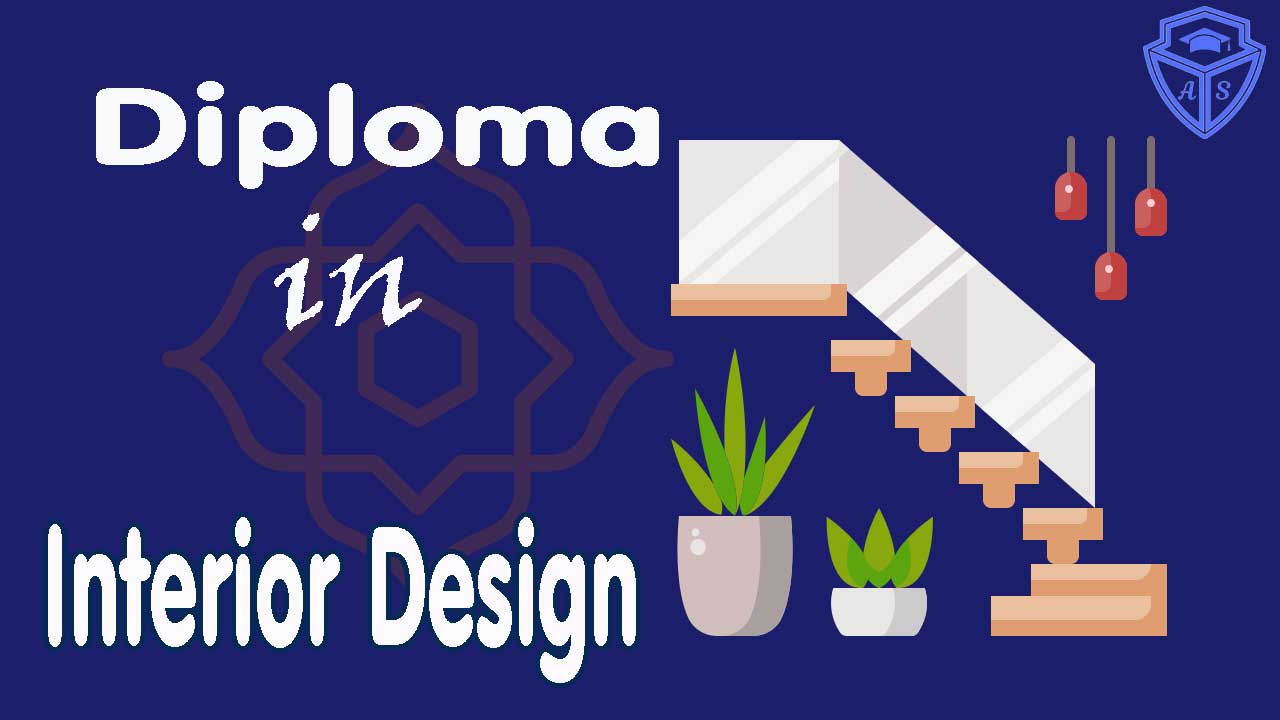A Diploma in Interior Design is a specialized program that provides students with fundamental knowledge and practical skills in designing functional and aesthetically appealing interior spaces. The course covers key aspects such as space planning, color theory, furniture design, lighting, and sustainable interior solutions, preparing students for careers in interior design and related fields.
Diploma in Interior Design Course Overview
- Course Name: Diploma in Interior Design
- Duration: 1 to 2 years (varies by institution)
- Eligibility: 10th or 12th pass from a recognized board
- Admission Process: Merit-based/Entrance exam-based
- Average Course Fees: INR 50,000 – INR 3,00,000
- Career Scope: Interior Designer, Space Planner, Furniture Designer, Visual Merchandiser.

Diploma in Interior Design Eligibility Criteria
The eligibility criteria for this course vary among institutions, but the general requirements include:
- Candidates must have completed Class 10 or 12 from a recognized board.
- Some institutions may require a minimum aggregate percentage (40-50%) in the qualifying examination.
- A strong interest in design, creativity, and spatial planning is beneficial.
- Certain colleges may conduct entrance exams or portfolio evaluations.
Also, check
| Find India’s Top Colleges |
| Best Course for Admission |
Diploma in Interior Design Admission Process 2025
The admission process for a Diploma in Interior Design generally includes the following steps:
- Check Eligibility: Ensure you meet the educational qualifications.
- Application Submission: Apply online/offline through the institution’s admission portal.
- Entrance Exam (if applicable): Some institutes conduct aptitude-based design entrance tests.
- Portfolio Review & Interview: Applicants may be asked to showcase a portfolio of creative work.
- Merit List & Admission Confirmation: Selection is based on academic scores, entrance exam performance, and portfolio assessment.
Entrance Exams for Diploma in Interior Design
While many institutes offer direct admission, some require candidates to clear entrance exams such as:
- NID DAT (National Institute of Design – Design Aptitude Test)
- CEPT Entrance Exam
- Pearl Academy Entrance Exam
- IIAD Entrance Exam (Indian Institute of Art & Design)
Diploma in Interior Design Course Curriculum
The course curriculum is designed to develop creative, technical, and practical interior design skills. Some key subjects include:
- Principles of Interior Design
- Space Planning & Layouts
- Furniture & Fixture Design
- Color Theory & Material Selection
- Lighting Design & Aesthetics
- 3D Modeling & Computer-Aided Design (CAD)
- Sustainable & Eco-Friendly Interior Solutions
- Project Management & Client Handling
Career Opportunities after Diploma in Interior Design
A Diploma in Interior Design opens up various career opportunities in the creative industry, including roles such as:
- Interior Designer
- Furniture Designer
- Space Planner
- Set Designer (Film/Theatre)
- Retail & Visual Merchandiser
- Architectural Assistant
- Event Space Designer
- Freelance Interior Consultant
Further Studies after Diploma in Interior Design
For better career prospects, students can pursue higher education such as:
- Bachelor of Interior Design (B.Des/B.Sc in Interior Design) – A 3-4 year degree program for advanced expertise.
- Master’s Degree in Interior Design (M.Des/M.Sc in Interior Design) – Specialization for high-level design roles.
- Certification Courses in CAD, 3D Visualization, or Sustainable Design – Short-term courses for skill enhancement.
Conclusion
A Diploma in Interior Design is an ideal choice for individuals passionate about transforming spaces and creating functional, visually appealing environments. With a growing demand for professional interior designers in residential, commercial, and industrial sectors, this course offers a strong foundation for a successful career in the design industry.
Prospective students should research institutions, fee structures, and career opportunities before enrolling to ensure they make an informed decision about their education and future in interior design.